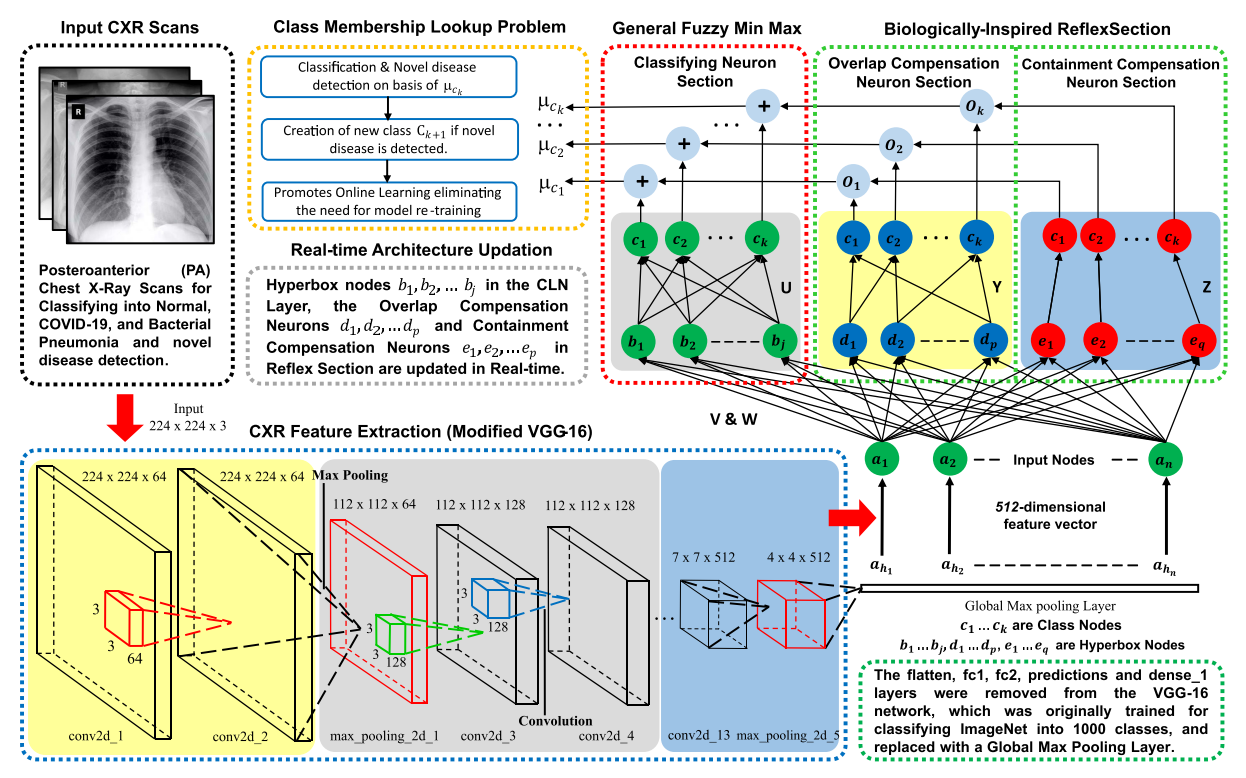Abstract
Deep learning-based Computer-Aided Diagnosis has gained immense attention in recent years due to its capability to
enhance diagnostic performance and elucidate complex clinical tasks. However, conventional supervised deep learning
models are incapable of recognizing novel diseases that do not exist in the training dataset. Automated early-stage
detection of novel infectious diseases can be vital in controlling their rapid spread. Moreover, the development of
a conventional CAD model is only possible after disease outbreaks and datasets become available for training
(viz. COVID-19 outbreak). Since novel diseases are unknown and cannot be included in training data, it is challenging
to recognize them through existing supervised deep learning models. Even after data becomes available, recognizing new
classes with conventional models requires a complete extensive re-training. The present study is the first to report
this problem and propose a novel solution to it. In this study, we propose a new class of CAD models, i.e.,
Deep-Precognitive Diagnosis, wherein artificial agents are enabled to identify unknown diseases that have the potential
to cause a pandemic in the future. A de novo biologically-inspired Conv-Fuzzy network is developed. Experimental results
show that the model trained to classify Chest X-Ray (CXR) scans into normal and bacterial pneumonia detected a novel
disease during testing, unseen by it in the training sample and confirmed to be COVID-19 later. The model is also tested
on SARS-CoV-1 and MERS-CoV samples as unseen diseases and achieved state-of-the-art accuracy. The proposed model
eliminates the need for model re-training by creating a new class in real-time for the detected novel disease, thus
classifying it on all subsequent occurrences. Second, the model addresses the challenge of limited labeled data
availability, which renders most supervised learning techniques ineffective and establishes that modified fuzzy
classifiers can achieve high accuracy on image classification tasks.


